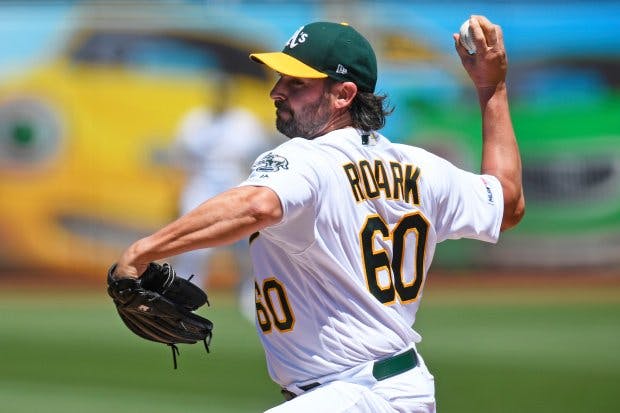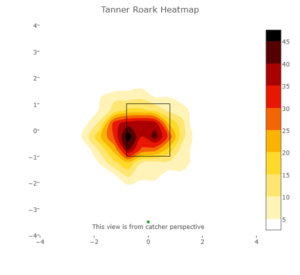Tanner Roark Brings Durability to Blue Jays Rotation

It wasn’t the flashiest signing but the Blue Jays inking of Tanner Roark for 2 years $24M, brings durability and consistency to a rotation that is sorely lacking that. Roark was worth 2.0 WAR last season, split between the Reds and Athletics. Steamer, the projection system hosted at Fangraphs, projects him to worth a similar 1.6 WAR this upcoming season.
Roark was signed primarily because of his durability. He has thrown at least 150 innings in each of the last four seasons. He should in theory replace the 124.0 innings thrown by Clay Buchholz, Clayton Richard and Edwin Jackson last season (a trio that combined to be worth -0.6 WAR).
Roark is your standard back of the rotation arm. He doesn’t get a ton of strikeouts but gets enough (21.9% K rate), to be effective. Same with walks, he doesn’t have pinpoint control (7.1% BB rate), but it’s good enough to be effective. The biggest thing for Roark is the long ball. His home run per fly ball rate has been double digits in each of the last three seasons. His best two seasons in 2014 and 2016 he was able to keep that under 10% and his ERA was under three. In the other seasons his ERA was up around the 4.30 range. Home runs will be an issue for Roark at Rogers Centre. Last season the dome had the highest park factor for home runs, per ESPN.
Roark doesn’t change speeds with his pitches too often; per Baseball Savant his primary pitches are a sinker, four-seam fastball and slider which range from 86-92 MPH, while he mixes in a curve and a change. His sinker is not a sinker in the traditional sense; it’s basically like another fastball.
It looks like a fastball, as there is very little drop. In fact Roark’s sinker drops 4.3 inches less than average which is 19% lower than comparable sinkers. Those -4.3 inches of sink ranked Roark 243 out of 267 qualified sinkers, one spot ahead of Joe Biagini. It may just be a coincidence but there a lot of current and former Blue Jays towards the bottom of that list. On top of Roark and Biagini, there’s Wilmer Font, Jacob Waguespack, Brock Stewart, and two new recent additions to the Blue Jays Chase Anderson and Anthony Bass.
Roark doesn’t use his sinker to get groundballs; he had just a 38.2% GB rate on the pitch last season. He uses the pitch to get strikes. To both righties and lefties he throws his sinker over 50% of the time when he is behind in the count, per Brooks Baseball. He pounds the edge of the strike zone with the pitch, inside to right-handed hitters and outside to lefties.

In today’s era of spin rate and velocity, Roark lags behind. His fastball velocity ranks in the 36th percentile and the spin rate on it is in the 18th percentile. Like the sinker he locates it very well, throwing it primarily up in the zone.

It can on occasion leak over to the middle of the plate which is where some of those home runs come from. This was a particular issue in September last season. As Al Melchoir notes in this article at Rotographs, Roark’s fastball was a meatball in September, it was right over the middle of the plate and lead to a disastrous month. If he can keep the ball up it’s not a problem, when it’s down it gets hit. 10 of Roark’s 27 home runs allowed came off the fastball.
Roark’s spin comes on his curveball where his 2746 RPM’s rank in the 82nd percentile. It’s a nasty pitch that he uses to get strikeouts.
At 33 years old this is what Tanner Roark is. He is going to try and paint the edges of the zone and get you out with his curveball. He doesn’t have high velocity and relies on location to have success. When he misses his spots he can be homer-prone. He does enough that he can take the ball every fifth day and be an effective major league starter, which is exactly what the Blue Jays need.
Recent articles from Paul Berthelot





